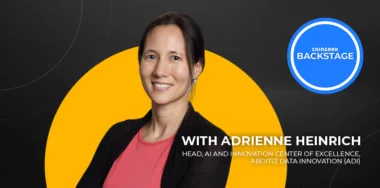Day 2 at Scaling Bitcoin 2017 Stanford, was again a day of fantastic research, aimed specifically at making best of an artificially restricted blocksize. This day was perhaps the more Blockstream aligned of the two days.
Early in the peace we had Joi Ito who gave a keynote presentation. His views on ICOs in particular seemed grab the interest of the audience. Joi’s view was that ICOs in general are of a scam-nature. When an audience member asked “Can you name an ICO that you think is doing things right, and an ICO that you feel is doing things wrong?” Joi responded with “I haven’t looked into enough to name anyone that is doing it right, so that by definition names the ones that I think is doing it wrong…” His answer drew a laugh from the audience.
Aviv Zohar gave a surprisingly very honest presentation on “how to charge lightning”. Lightning transactions as we know are the holy grail of a Segwit enabled Bitcoin. Zohar’s presentation described different theoretical models on how certain transactions would work, and best methods for keeping a lightning channel funded, and other costs associated with keeping it alive.
Zohar’s honest description of how it all works came with some interesting points:
“On chain transactions have a fixed fee for blockchain use… On Lightning its somewhat unknown. But if you think about it, if you do a large transaction on the lightning channel, you shorten the life of the channel more than you would if you do a small transaction”.
He stated that in certain conditions with large transactions, it is much more worthwhile transacting directly off the blockchain. “Both of these sources of transactions are trying to touch the blockchain for different reasons. One is to establish lightning channels, and the other is to do direct transfers, and it is not entirely clear which one drives up the price for the other… do they both co-exist?”
Two high level topologies were presented, one with pairs, and one with a hub. Zohar admits that the hub connecting people would be highly centralized.
Another point made is that the Lightning Network would reduce fees heavily for miners. Moreover, according to his analysis, if we were to double the blocksize, fees would reduce to more than half. This is an interesting point, because it shows that a bigger blocksize has a curved relationship with fee reduction.
His conclusion was that Lightning definitely helps, but he believed that it was not everything he was hoping it would be… “I was frankly expecting Lightning to do a lot more… in some sense I wanted a factor of 100 on transaction throughput…” he stated. “A 2x blocksize helps a little but not that much”.
Moving on, another highlight of the event was Andrew Poelstra’s Scriptless Script. His method provides off-chain capabilities for smart contracts. But more so, he looked at some very clever ways of achieving hash preimages and giving incredible potentials for truly private contracts.
Andrew’s talk titled “Using chains for what chains are good for” is surprisingly consistent with nChain’s view for how the contracts can be applied to blockchains. This is a notable departure to Ethereum’s distributed processing methodology.
Karl-Johan Alm presented a neat fee estimation optimization by actually looking at the mempool. Current methods are blind to the mempool and therefore, miss opportunities to reduce fees when the mempool is empty. I noted that, although this reduced the fees, it also created more volatile swings. I asked Karl-Johan on how he perceives user experience to be impacted by this, and he responded with “it will definitely affect user experience… I’m counting 100% on users using RBF (replace-by-fee).” The RBF is an inescapable aspect of Core’s philosophy on Bitcoin it seems.
All in all, we found quality technical work throughout. But frustratingly, there was very little if any work presented from the big-blocker camp. Also, notably absent were the miners, except for perhaps BTCC… At such events, one would think that miner participation would be crucial… perhaps the Segwit2x drama was too much… Also, glaringly absent were some key Core and Blockstream representatives. This was perhaps a boycott due to the invitation to Bitcoin Unlimited, who presented the day prior.
Later in the day, I had the opportunity and privilege to catch up with Roger Ver, who, wasn’t at the conference, but happened to be in the area. The short interview with him, will also be posted here on CoinGeek tomorrow, along with Peter Rizun as well.
Eli Afram
@justicemate
New to blockchain? Check out CoinGeek’s Blockchain for Beginners section, the ultimate resource guide to learn more about blockchain technology.








